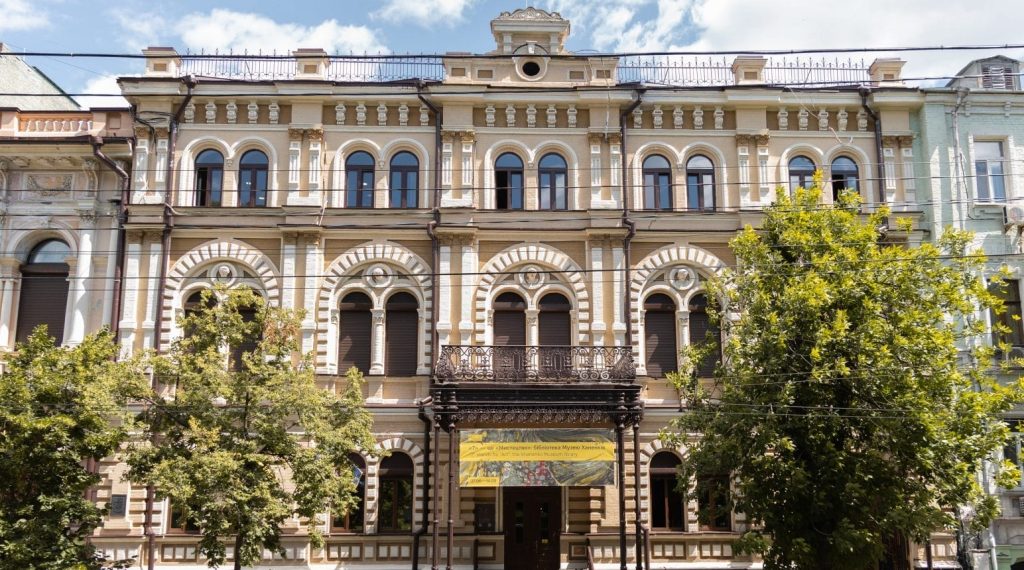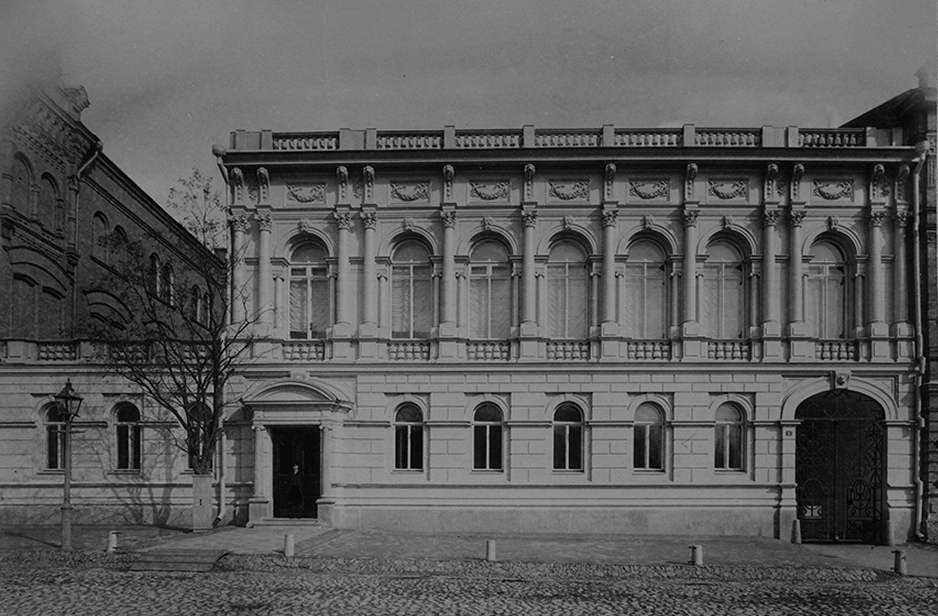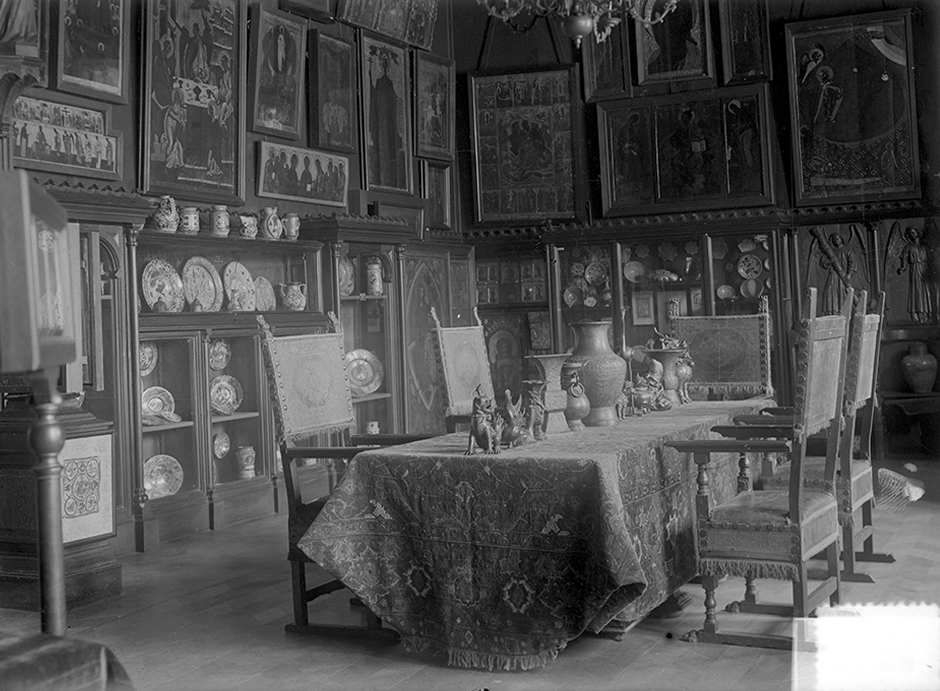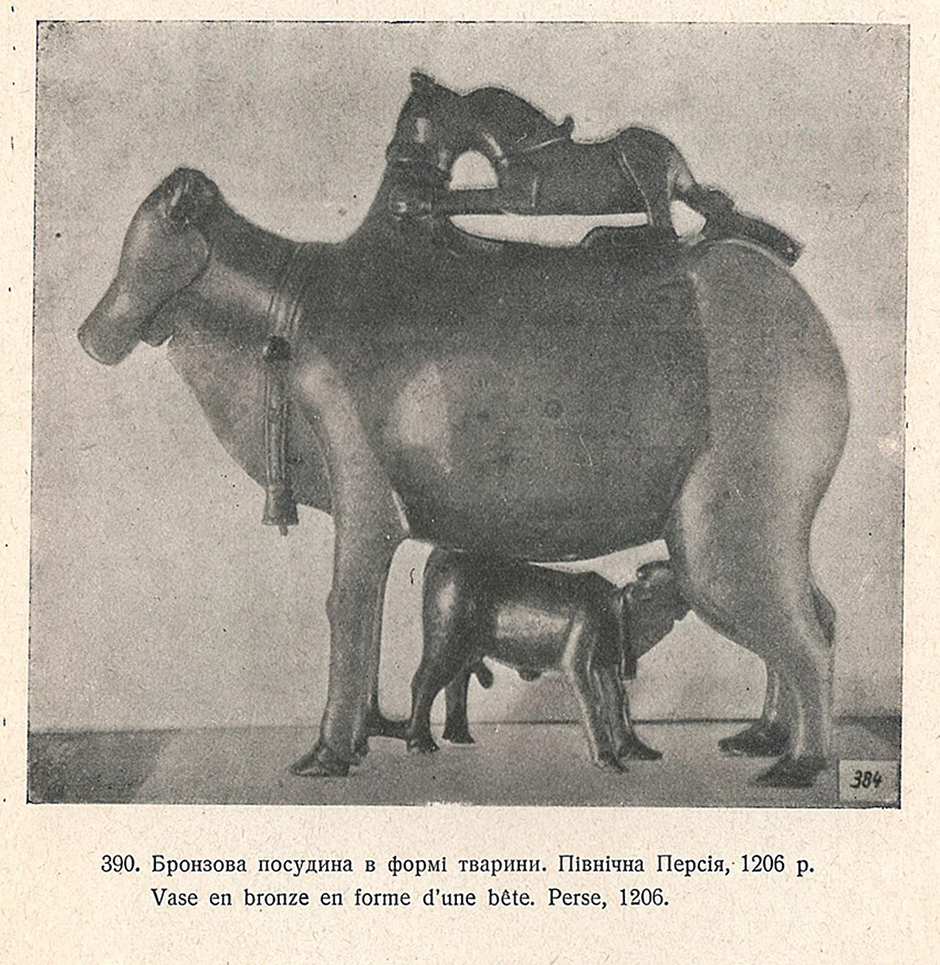History
of the Khanenko Museum

The history of the Khanenko Museum dates back to the 1870s, when Bohdan Khanenko married Varvara Tereshchenko. The newlywed couple became fascinated with the idea of creating their own art collection. The Khanenkos travelled extensively throughout Europe, visiting museums, participating in auctions, and establishing connections with art researchers, dealers, and private collectors.
Initially enthusiasts of old European masters, they gradually discovered the art of Islamic cultures, East, Central and South Asia, as well as Ukrainian archaeology, ancient icons, traditional Ukrainian folk art and Cossack antiquities. As a result of more than 40 years of collecting, they assembled a highly valuable, encyclopaedic art collection in Kyiv.

Opening a museum of world art in Kyiv became the main focus of the Khanenko family’s life. This is evidenced by Bohdan Khanenko’s will from April 1917. In December 1918, Varvara Khanenko signed a ‘Deed of Gift’ transferring the collection, their exquisite Kyiv mansion and library to the Ukrainian Academy of Sciences. However, history decided otherwise. In June 1919, the Bolshevik government nationalised the Khanenko family’s property by decree of the Council of People’s Commissars of the Ukrainian SSR.
A state art museum was opened in the Khanenko house. The first curators of the museum were Varvara Khanenko and art historian and artist Georgii Lukomskyi. Thanks to the support of the Ukrainian intelligentsia, the elderly Varvara Khanenko obtained the right to reside at the museum. She remained a member of the museum’s committee until the end of her life. But in 1924, two years after the founder’s death, the Soviet authorities decided to remove the Khanenko name from the museum’s title ‘due to Khanenko’s lack of revolutionary merits to proletarian culture.

It was not until 1921 that the Ukrainian Academy of Sciences included the museum in its jurisdiction. The first director of the museum was art historian and archaeologist Mykola Makarenko. In 1923, Serhii Hiliarov, an art historian, joined the museum and over the next decade developed its research work: consultations with leading experts, postgraduate studies, research seminars, and the first catalogues of museum collections.
During this period, the Khanenko museum collaborated with a brilliant group of experienced and young historians and art historians: Boris Roerich, Vsevolod Zummer, Mykola Biliashivskyi, Maria Viazmitina, and Polina Kulzhenko. In the 1920s and 1930s, the museum’s collection underwent significant changes.
Valuable collections from Vasyl Shchavynskyi, the Repnin princes, and the Museum Town collections were added to the museum’s holdings. At the same time, the museum was forced to transfer valuable collections from the Khanenko family’s estate to other museums in Kyiv: family portraits, archaeological collections, Ukrainian and Russian art, European and Asian weapons. A number of the most valuable exhibits were seized by ‘Derzhtorg’ for sale abroad. A number of unique works from the collection were forcibly taken to the State Hermitage Museum in Leningrad.

The repression of the Ukrainian scientific intelligentsia in the early 1930s marked the beginning of a long period of ideological education, persecution of dissent, and stagnation in the museum’s scientific research – a period that lasted until the mid-1980s. At that time, the museum was called the ‘Kyiv Museum of Western and Eastern Art.’ In terms of the value of its collection, it was the third largest museum of world art in the USSR. During World War II, some of the museum’s works were evacuated to the city of Ufa (Bashkortostan) in Ukraine. The part of the collection that remained under German occupation was looted during the Nazi retreat from Kyiv in 1943. Today, the museum is working to locate the lost part of the collection.
From 1986 to 1998, the museum was closed for major renovations. With the arrival of new management headed by director Vira Vynohradova, the museum entered a period of restoration of historical memory and intensive development. In 1998, the restored historical Khanenko Mansion opened its renovated exhibitions of European art from the 14th to 19th centuries. In 1999, the names of the founders were returned to the official name of the museum. In 2004, a permanent exhibition of world-famous unique ‘Sinai’ icons of Byzantium from the 6th and 7th centuries was opened in one of the halls of the Khanenko Mansion. In 2006, the first large permanent exhibition of Asian and Islamic art in the museum’s history began operating in the Sakhnovskyi Mansion.

The first decades of the 21st century saw an intensification of research into the museum’s collection and history. A new philosophy and practice of educational work and museum services is being formed. The first large-scale study of visitors was conducted .
Hanna Rudyk
The museum focuses on working with children, young people and families. An inclusive approach is being developed: programmes for people with disabilities, programmes for the elderly, low-income and homeless people. Since the beginning of the russian war against Ukraine, the museum has been paying special attention to services for military personnel, veterans, their families, and internally displaced persons.